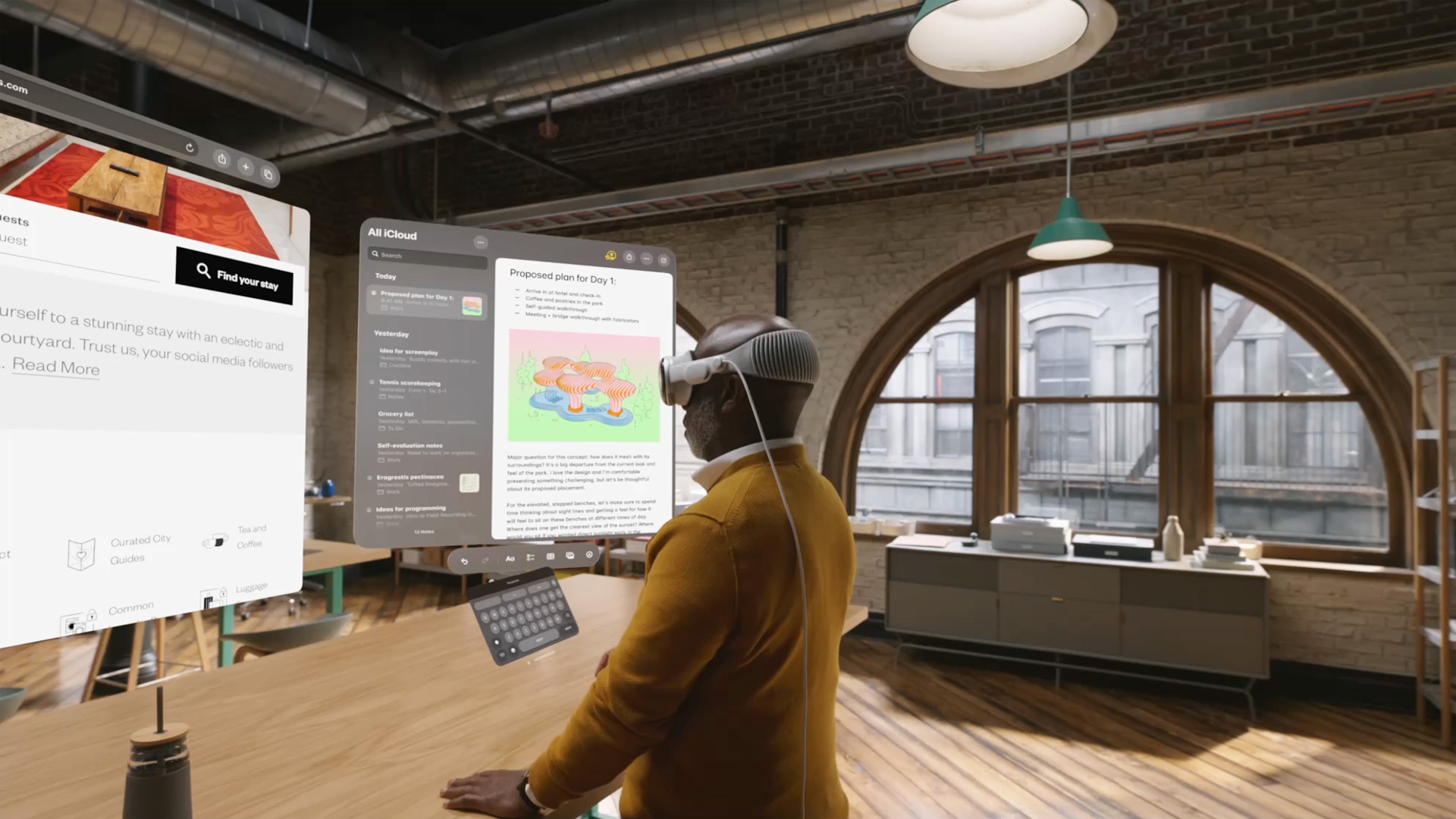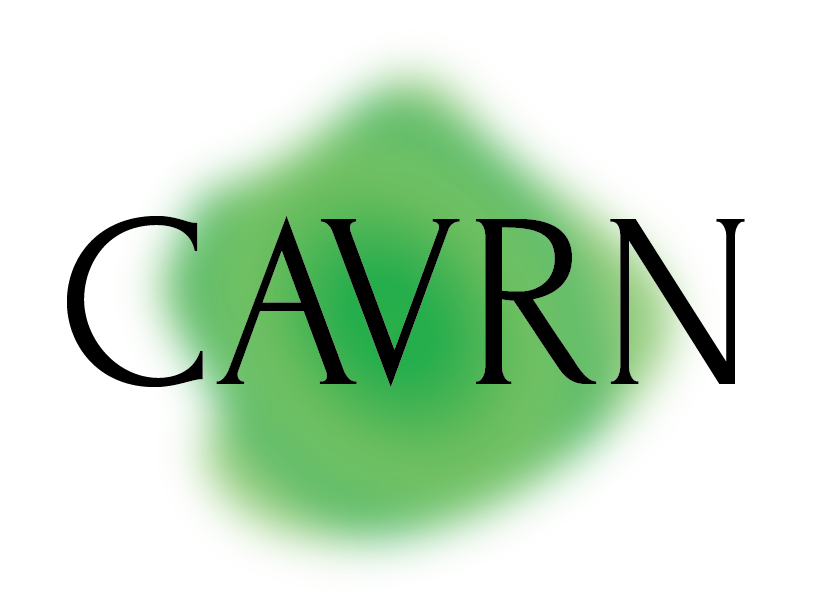XR as Spatial Media Across Disciplines

In the early stages of an interdisciplinary collaboration that led to a new article analyzing the promotional material for Apple’s “first spatial computer,” the Apple Vision Pro (AVP), our discussions often returned to the overlapping themes that we saw across a variety of research engaging in questions around “spatiality” and/or “spatial media.” Again and again, we would remark on the ways that scholars across disciplines, including digital geography, communication studies, media studies, science and technology studies, etc., raised similar questions and critiques about the “hybridity” of media, the “embeddedness” of everyday technology, or the “materiality” of the digital.
Noticing and pulling at these threads of cross-disciplinary theorizing became an unintentional throughline in our work together. For example, when reading Dourish and Bell (2011) describe the spatiality of ubiquitous computing (with their own academic backgrounds representing intersections between computer science and the social sciences), we noted that they rely on feminist geographer Doreen Massey’s theorization of “power geometries” to describe the ways that ubiquitous computing spaces and infrastructures can reproduce unequal relationships. These moments of cross-disciplinary dialogue are not typically highlighted, but they are important: where and what we publish may silo us, but critical conversations about “spatial media” can show how fuzzily some of the presumed lines are drawn.
In our article, we extend these kinds of cross-disciplinary considerations to argue that the promotional content for the AVP shows us much more than glossy advertisements. In commercials that show a dad happily designing surfboards on virtual screens while making breakfast for his child, or sequences that show people wearing their AVP with no visible discomfort and never needing (or wanting!) to take it off, we’re also getting a glimpse at how Apple imagines its prospective buyers. For any designers or developers watching, the advertisements are a kind of blueprint: these are the specific types of people you’re designing for, these are the environments, these are the expected cultural signifiers, the economic means. Each facet shows us who the Vision Pro is for, and by extension, Apple shows us that the AVP is clearly not for everyone.
“The advertisements are a fantasy, as all advertisements are, but by showing us a world where the only technology that exists is designed by Apple, it is also easier to see all the things that are left out.”
The advertisements are a fantasy, as all advertisements are, but by showing us a world where the only technology that exists is designed by Apple, it is also easier to see all the things that are left out. As we describe in the article, all the inclusions and exclusions within these fantasies—such as those suggested by a relatively homogenous group of users and environments despite a surface-level ‘diversity’—can be incredibly revealing, and point to opportunities for further examinations of these imagined technological futures.
Thinking more broadly about inclusions and exclusions at the level of our work together, Apple’s discursive move to call the AVP a “spatial computer” rather than VR, AR, or XR felt like a blessing in disguise. It prompted us to look at a range of interrelated considerations across the variety of research that has examined the multiple structures and systems that precede current HMDs, providing the crucial reminder that XR research has long been multidisciplinary. The latest edition of Social Grammars of Virtuality confirms that this continues to be true, offering a glimpse of the many disciplines involved in current XR research (Girginova and Vadala, 2024). Their report shows an expanding range of intersecting areas of interest, as well as opportunities for projects that have the potential to synthesize insights that cross disciplinary lines, especially in key areas—like education—where the interests of various disciplines collide.
Girginova and Vadala (2024) also show that collaboration is common in XR research, reporting that in 2023, 95% of the articles in their overall sample were co-authored (80% for articles in the social sciences). For those of us who work in fields and universities that still prize single-authored publications, these percentages should (at the very least) prompt us to question another persistent fantasy: the academic alone at their writing desk doesn’t quite make sense for a topic that often requires cross-disciplinary conversation.
Of course, we should still be wary of any academic boosterism of “interdisciplinarity” when it is uncritically promoted as a way to justify one discipline swallowing up another within the university, or when the process does not also consider the epistemological foundations of a given theory or practice. Ideally, however, collaborative interdisciplinary XR research is an opportunity to learn from each other while looking for the edges and boundaries of our disciplines.
As the broader platform politics of XR evolve alongside other relentless techno-utopian narratives of the present, such as those that hype the benefits of AI, it will continue to be necessary to ask what is left out of these imaginaries. But as we hear renewed proclamations that XR offers new forms of spatial engagement, it is also important that these imaginaries open new interdisciplinary space, urging us to collaboratively question how we think about the contemporary realities of XR.
References
Blackman, T. and Harley, D. (2024). Interpreting Apple’s visions: Examining the spatiality of the Apple Vision Pro. Platforms & Society, 1. https://doi.org/10.1177/29768624241283913
Dourish, P. and Bell, G. (2011) Divining a Digital Future. Cambridge, MA: MIT Press.
Girginova, K. and Vadala, J. (2024). Knowledge Mapping of Extended Reality Literature. Available at: https://penn.manifoldapp.org/read/knowledge-mapping-of-extended-reality-literature-in-2023/section/01f6c5ba-9e8a-4e77-8b6c-4297b839f607
Recommended citation
Blackman, T. & Harley, D. (November, 2024). XR as Spatial Media Across Disciplines. Critical Augmented and Virtual Reality Researchers Network (CAVRN). https://cavrn.org/xr-as-spatial-media-across-disciplines/
This work is licensed under a Creative Commons Attribution-NonCommercial-NoDerivatives 4.0 International License.
